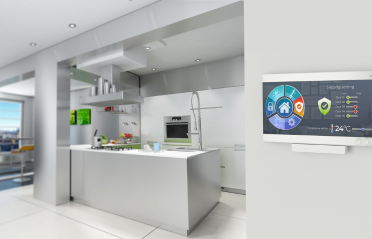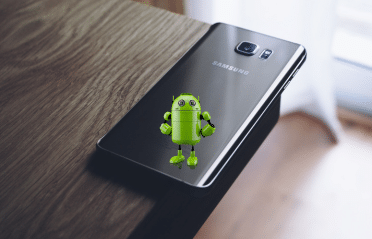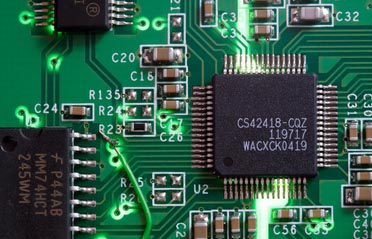Frost and Sullivan aptly describes the Test and Measurement (T&M) industry as follows:
Sometimes perceived as a necessary evil, the test and measurement industry plays a critical role in the delivery of product and service quality to one’s customers. Virtually every industry, including aerospace and defense, telecommunications, automotive, energy, medical, consumer electronics, semiconductors and many more, uses test and measurement equipment for designing, manufacturing, deploying and ensuring the highest level of satisfaction of customers with products and services.
In end 2013, KPMG valued the collective Test and Measurement Industry (products and services) to be over $130 billion globally. At a broad level, Test and Measurement companies cover a very wide spectrum of industry verticals, including:
- Communications & Wireless
- Medical Instruments
- Industrial
- Automotive
- Aerospace
- Technology and Sofware
and various other verticals. Over the past few years, the Test and Measurement market has seen a significant evolution in tools and products as well as aggressive product releases and acquisitions. Take for instance, the Communication and Wireless vertical. 2014 saw several acquisitions just within this one vertical including several examples of M&As, record breaking sales for key OEMs and other re-organizations (source).
Market Needs
HSC has been a key software solution provider to various Test & Measurement providers over the past 10+ years and has observed the following trends, irrespective of the industry vertical
- T&M OEMs are looking at a better user experience for their test workforce than legacy products have to offer
- Users using these T&M products are wanting to carry less devices with them so they are more mobile
- T&M OEMs want to reduce time to market and stay ahead of features as competition heats up
- T&M OEMs want all of the above, but want their products to be cheaper than what they cost last year (not a conundrum, as we will describe later)
- Cloud and Analytics are a big push in their market as both the OEM and the users want more value from their device and better tools to help them diagnose. The OEMs also want cloud based Analytics to be able to provide value added analysis based on historic trends and knowledgebases that are able to tap on similar issues and help the tester with specific information on problem tracking
All good, but Android for Test and Measurement devices?
Over the past 2-3 years, HSC has seen significant interest from T&M OEMs to explore what it takes to migrate their platform from a (mostly) Linux-based system today to Android. We think it makes a lot of sense. And let us explain why:
Android is cheaper (for devices that use a multi-line display and have connectivity needs)
Hard to believe? We think its true. The economics of Android are hard to beat in this market.
- The core OS is free. It’s Apache Licensed. Yes, we know Linux is free too (and Android is based on Linux).
- Depending on the functionality you need, a wide variety of SoCs are available that range from $3 to $10.
- Freescale, TI, MediaTek, AMLogic, MediaTek, StarCore are some example SoC with good Android support (with the latter three at the lower end of the price range)
- Depending on the nature of solution you are building, a typical BOM for a board running Android with a 1.1GHZ processor, 1GB RAM and BT+WiFi integrated can be developed as a custom solution from $70 – $140 per board depending on features
- If however, you don’t need custom development, there are ODMs that HSC works with that can even produce complete white labelled 7-inch tablets with plastic enclosures for $60. In other words, the pricing flexibility is enormous.
- It costs less to maintain an Android product over the long run as at the application level, the SDK is well-known and wealthy, so it needs lesser proprietary knowledge.
Android has better suited UX and connectivity built in and people intuitively know how to use it
- Android has a very rich UX interface and has WiFi, BT, NFC, and a host of other stacks already built in
- Given the dominance of Android in the market, consumers already know how to use Android based products and this leads to quicker familiarity
Android is customizable and it's not all Java. It has C too.
One of the biggest concerns we face from customers in this space are they inevitably have a wide range of custom protocol stacks and native C libraries and they have been told migrating to Android won’t be possible because they won’t be able to use these components. This is simply not true. In the past few years, we have delivered several projects to such OEMs where we have integrated their legacy protocol stacks as native C libraries right into Android. That is what the Android NDK is there for. As long as we have your header files, we can develop JNI shims that can make your Android applications work very well with the C libraries. Infact, we often encourage core libraries to be kept in C. They often execute faster (depends on the number of context switches and other factors, but in general this is true for a complex library) as well. Here are some examples of how we customized Android for Test and Measurement OEMs in the past:
-
- Integrated HL7 stacks for a medical T&M provider
- Modified Android RIL to collect special RF parameters for a wireless T&M OEM
- Integrated RS485 stack for a Building Automation controller OEM
- Integrated CANbus and Flexray libraries into Android for an Automotive T&M OEM
- In other words, Android is customizable at every single layer.
Android has many other ‘inbuilt’ features into the SDK that helps you add more value easily
- Push notifications: GCM is a stable and reliable push notification mechanism that can be easily used for asyncronous notificaitions that help workforce in schedule management and a variety of other functions (including receiving results of detailed analysis from a central server asyncronously). This functionality just works – there is no need to spend time on designing a messaging architecture
- Most android devices come built in with various sensors like gyrometers, acclerometers, haptic and accessories like cameras, microphones that help the application developer to more easily create new value added applications
My device is a large unit/too specialized and we really can't use Android in it
Fair enough. We have worked with solutions (Laboratory test equipment as one example) that are either too large to move around or too specialized/real-time to warrant the use of Android. Have you thought of companion solutions? For example, one could use Android tablets and phones that could interface with your unit via a wireless protocol (Bluetooth, NFC, WiFi, WifiDirect, etc.) and act as a ‘remote user interface’ that makes it so much simpler for remote testing and your users will love it.
Great, so why don’t I pick a tablet from ebay and start creating my next T&M product on my own?
Well, therein lies a challenge. If you are a skilled captain that can weather rough seas, by all means. If you are not, hire a captain that knows how to navigate the unexpected waves of custom Android image development. For example:
- Hardware Build quality: Depending on what market you are serving, there are different standards and compliance needs to sell T&M products. For example, HSC has the ability to partner with different ODMs to build turnkey solutions for Consumer vs. Enteprise Devices. The difference at the end of the day comes down to BOM cost and NRE cost for prototype development – depending on the certifications and standards requirements, its important to choose a partner that knows your market needs
- Upgradeability – Many of these very low cost tablets on eBay and similar are produced using “end of life” SoC models. In other words, the SoC OEM does not have a commitment to provide new upgrades of Android for these chipsets. You can’t just download a stock Android code and make it work as you will not have the Android HAL and linux device drivers that work with a new version of Android
- Source Code – Most Test and Measurement OEMs we work with need Android source code, because we are creating a custom ROM with specific modifications to Android for their measurement tool. Many of these low cost SoC’s do not provide Android source code. They sometimes only provide Linux code but not the Android Framework code. Some other SoC vendors provide code but demand a large fee. As we mentioned earlier, all SoCs customize Android at the HAL/Middleware and Linux driver level – if you don’t have that stack, you can’t install a new version of Android. Over the past years, HSC has helped Test and Measurement OEMs select the right trade off between price and source code access to be able to avoid these gotchas.
I have Android source code, I have my board. Any more gotchas
Some of the biggest gotchas are at the software level. It’s one thing to ‘make your current product work’, its another to make sure you architect it in such a way that migrating to the next version of Android does not become a nightmare. Android today has around 10+GB of source code, and poorly documented (remember, we are not talking of SDK app development here). We have seen many cases where previous vendors have taken a hammer handed approach to Android customization. You can go ahead and change the Android middleware and make it work for most of your needs, but every time you modify middleware, remember that you are increasing the complexities of a future upgrade to a new version of Android. Instead, HSC works with OEMs to ensure that the right layer of Android is modified with minimal changes to the framework. Some of the things we do:
- Leverage application layer and system priviledged applications of Android before going down to the framework
- When making changes to the framework, we ensure that we don’t do anything that could break a future Compatibility Test Suite run (if you ever want to market your product with Google Apps, Google Play store or even use the Android logo, you need CTS)
- HSC has a strong understanding of Android’s evolution and can both design as well as maintain your product code through multiple iterations of Android
Summary
The Test and Measurement market is going through a lot of change and the need is for devices that perform better, are lighter to carry and are much better in UX. Android fits this bill perfectly. HSC has been customizing Android since 2006 for a large variety of industries and we believe we have a best in class R&D and software engineering team that can build a great Android T&M solution for you. In addition to just software, HSC partners with Hardware ODMs to offer you complete turnkey services for a combined software + hardware + enclosure solutions to produce white labelled tablets and devices running Android.

 Product Engineering Services Customized software development services for diverse domains
Product Engineering Services Customized software development services for diverse domains
 Sustenance Engineering Going beyond maintenance to prolong life of mature products
Sustenance Engineering Going beyond maintenance to prolong life of mature products
 Managed Services Achieve scalability, operational efficiency and business continuity
Managed Services Achieve scalability, operational efficiency and business continuity
 Technology Consulting & Architecture Leverage the extensive knowledge of our Domain Experts
Technology Consulting & Architecture Leverage the extensive knowledge of our Domain Experts

























